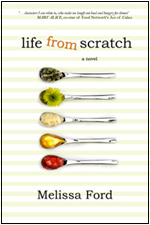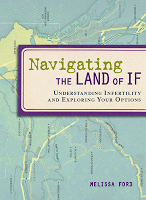The New York Times and Stephanie Saul: Infertility! Twins! Danger!
Getting beyond the fact that I usually start twitching when someone sends me something from the New York Times, all the more violently when the byline comes from Stephanie Saul who insists that it’s a good idea to use the wrong terminology when discussing fertility treatments, I couldn’t help but read the series of articles about multiple births and fertility treatments. Unlike others, I did not bother to click on the accompanying comments because I am familiar enough with the New York Times to know that nothing good can come of reading the opinions of people who see nothing wrong with the fact that their newspaper is wrongly using the term implant in regards to embryos.
You can’t argue with the meat of the articles, the first of which can be boiled down to the thesis that multiples increase the risk of prematurity, and therefore, protocols should be in place to discourage practices that would lead to a higher chance of multiples. A pretty sound idea. The second article covers the topic of selective reduction and how IUIs lead to higher order multiples because there is less control than IVF. Again, no one can dispute that fact. A third roundtable discussion covers again the problem with multiple births.
Of course these articles were of interest to me as a mother of twins who were conceived with the help of fertility treatments. They were delivered seven weeks prematurely when they stopped growing in-utero and there was deeply discordant growth. They spent three weeks in the NICU and have been generally healthy with some lingering problems of prematurity. Obviously, I’m one of the target audiences for these articles and you would think that I would have nodded my head a bit more since they do bring up tangentially ideas that I firmly believe.
But the problem begins with the fact that Saul never convinces me that she wants to hold a frank discussion, working together via journalism to solve the problem of multiple births and prematurity in regards to fertility treatments. Instead, the language used, the stories told, and the facts addressed all point to the fact that Saul never closely examines the solutions, instead choosing to only address the problems–and missing the point entirely in the process.
Instead of focusing on reasons why people would risk the transfer of multiple embryos, practicing sound journalism where she would interview numerous subjects and utilize their words to present the story, Saul jumps to conclusions: “patients are eager for children” and they want “to be successful on the first try.” But rather than state the real reason why women wouldn’t want to undergo more fertility treatments than necessary–money and physical pain–time is given as a factor.
Anyone who has paid out of pocket for a chance to conceive knows that there are two main reasons why people take risks with treatments and they are very closely aligned to the reason why people take risks with any medical treatment–especially one that is tied to quality of life. First and foremost, the exorbitant cost of treatments–mostly uncovered by insurance–goes towards a chance rather than a child. Few have the ability to do treatments until they work. Most need to take risks in order to feasibly pay the high price of family building (and for the love, before you suggest adoption, please first understand the cost of adoption and why it isn’t a solution to infertility but instead a wonderful, separate family building option).
Secondly, anyone who has been on the receiving end of a needle knows that you try to complete as few cycles as possible to conceive both due to the physical discomfort associated with treatments as well as the overall health risks that can come from doing treatments. There are times when the risks of prematurity and multiples balances out the risks of doing multiple treatments for both the woman’s mental and physical health.
Saul reveals her bias early on (as if she hasn’t already done so in the past with her other articles concerning infertility), calling it the “fertility industry,” a term used by others to greater impact because it is backed by ideas rather than used unsupported as a slur. We don’t call it the cancer industry, implying that people are being churned through like cans of creamed corn or automobile parts. We don’t imply that people are being moved through the medical factories mindlessly like just another object if they treat a health issue such as breast cancer. We don’t call it the obstetric industry even though we all know the statistics on unnecessary c-sections. The term is as paternalistic as the practices the terms evokes, as if women and men do not have the mental capacity to think for themselves and be careful health consumers.
One of the real financial problems of infertility and prematurity was barely addressed at all in the articles and it serves as the white elephant in the room: if insurance companies covered the cost of treatments, they would save on the back-end in the cost of NICU stays. You would get more people to accept eSET (elective single embryo transfer) or to cancel IUI cycles when too many follicles are made if they knew that they had another chance financial-wise to cycle again.
This has long been the point made by Resolve, the national infertility organization aimed at providing infertility education, lobbying lawmakers, and extending support to those experiencing infertility. It’s an organization that has been working hard for actual change as America reexamines health care, lobbying lawmakers for support of two bills that would require insurance companies to cover fertility treatments. In other words, it is asking America to put their money where their mouth is–either we value the health of women and children and want them to make sound decisions about family building or we don’t. Either we believe that family building is an important endeavour or we don’t.
It is a bit disturbing that an organization that has been at the forefront of infertility education wasn’t quoted in the article. She refers to the fertility industry, yet never ventures outside of a small circle of “factory owners” to broach those who would receive no financial gain or loss by having changes to treatment protocols.
And for the love, it is a fertility doctor–Robert Stillman–who brings actual sense to this discussion with his participation in the treatment roundtable, giving concrete steps one could take to solve the problem rather than stand in the wings like Stephanie Saul, starting the horror movie music in the background as she writes such fear-inducing lines such as “an exploration of the fertility industry reveals that the success comes with a price.”
She takes extreme examples–a woman with two follicles that split into sextuplets (seriously, Saul, I thought I was going to go into convulsions from your misuse of implant and transfer, but when you stated that the doctor saw “two developing eggs” on the ultrasound screen, I think I literally started foaming at the mouth)–a situation that the doctor had never seen in 30 years of practice–and hold it up as your IUI example. It would be like examining IVF solely through the lens of Nadya Suleman–which…er…I forgot…you already did that a few months ago.
Saul’s sole mention of the solution is buried towards the bottom of the first article: create programs that make it financially feasible to perform single embryo transfers. And instead of exploring that option in the second article, Saul chooses to wax on about the dangers of IUI, instead pointing out how much more controlled IVF is (and it is, but that never was made clear in Saul’s first article) in terms of limiting multiples. She gives solutions short-shrift. Which makes me question the point of these articles. Is it to raise questions that require answers? Push society to examine where we place family building on our emotional continuum? Seek solutions to what she deems a pressing enough problem to warrant multiple articles?
At the end of the day, it comes down to money and overall health–physically and emotionally. Make treatments financially feasible and people would make different decisions. Create programs where embryo freezing is free for those who elect to transfer one embryo and you’d have more people take advantage of the program. Make future transfers free as well and you’d have incentive to lean towards eSET over multiple embryos, especially when drug intake in future cycles can be curbed.
When I taught eighth grade and my students would negate their own thesis within the paper, I would circle the sloppy writing and point out the mistake and send back the assignment to be rewritten. And it sort of sucks that I’m not Stephanie Saul’s teacher because I would have given her a second chance to make a strong case. And as is, the New York Times again is the proprietor of what essentially amounts to verbal Wonder Bread–no substance, no mental nutrition, and mostly air taking up valuable space that could have been filled with useful argument.
Cross-posted at BlogHer













62 comments
I really don’t understand why the NYT doesn’t just have you write for them. I am not being facetious. My hero worship continues every time you write something that so perfectly explains everything I feel but cannot articulate.
this is a truly excellent post, mel — thoughtful, articulate, compelling. if you haven’t already, I’d like to be the 52nd person to urge you to submit it to the op-ed pages of the NYT. just brilliant.
Mel, this is an incredible post. When I read Saul’s article I could feel her derision and had to wonder what she has to be so smug about.
When I was pregnant with my twin girls, not a day went by that I wasn’t nervous about all the complications that could occur. If I had read that article while I was carrying the babies, I would have been beside myself. She should be ashamed of herself and I really hope she reads what you so eloquently wrote.
Thank you so much for writing this Mel. It really is a well written, educated response to the article and I appreciate it very much. I’m so glad we have you on “our” side.
I read the articles and didn’t get angry. I was sad. For all of us. Who have endured this arduous journey. For some with no rainbow at the end. For others a pot of gold. I think the biggest lesson we can take from this article, and from our experiences in this bizarre land of IF is the unjust act of it not being covered by insurance. We need a revolution!!!
xo
Great post. When you quoted her saying “patients are eager for children” and they want “to be successful on the first try.” it made me angry, like there is something to be ashamed of in being eager, or wanting to be successful. What woman who is TTC isn’t eager for that child, and what woman in her right mind would NOT want it to work as quickly as possible. Are we less qualified to be eager or expect good results because God/Fate/Whatever dealt us a bum uterus?
I think it is easy for those to whom children come easily or those who don’t want children, to sit on their high horses passing judgement. Why these women are not the ones being doled out the infertility card… I will never know.
Sorry, I am a little bitter this morning and the article really struck an angry chord with me. We are not all Nadya Sulemans… we don’t want to risk everything for a chance at some bullshit stardom or some dumb tv show, we are just women who want to have a family. This is not something that we have walked into by choice… “Oh, I’ll take triplets here, twins there.” We just want a family. Shame on Ms. Saul for assigning blame to that.
The only argument I have for the other side of the fence is this: There is no way the NYT is going to address deficiencies in insurance coverage at this particular point in history. To do so would make FoxNews accuse them of being a part of the liberal media supporting the president’s plan for universal health care coverage.
Of course, it would help the NYT if they could get someone who actually researched topics to write their articles.
Wow. Nice job Mel!
I read your post yesterday and I wasn’t going to read any of the accompanying posts because I didn’t want to be angry & sad. I’m dumb, I read them anyway. I can’t believe how ignorant people are about IVF and adoption. I can’t believe that because I can’t have a child without assistance I am “selfish” and “vain”. My heart hurts over this.
I love it! Verbal Wonderbread. That’s fantastically true. I haven’t read the articles and won’t right now at least because I’m lacking in sufficient time to swear at the computer right now. Your post is great though and very well written.
A couple of interesting things that caught my eye about things in her article: The IUI with 2 follicles that split into sextuplets? Even in a world where the IUI was covered etc would they have likely quit or stopped the cycle with just two eggs? Probably not. That is just one of those bizarre things that happens. Also I will agree that as far as reducing multiples IVF does give more control over the situation and sET’s can be done but IVF is also a more invasive procedure bringing with it chances for adverse outcomes with anesthesia, larger risk of OHSS, infection or damage to other organs are a few of the risks. It is typical of the medical community to start with the least invasive procedure (IUI) and then work from there. I don’t think that totally doing away with IUI is an answer. Even if IVF was covered for everyone. There are those who get pregnant with IUI. I do think though it should be done more responsibly but monitoring and canceling cycles with too many follicles. Of course that wouldn’t stop people from having sex anyways and still trying.
Hear hear! And amen to Kate (#18 on the physical/mental toll of cycling. It drives me crazy when ignorant commenters talk about how women who do IVF just want an “instant” baby or are taking the “easy” way out. Clearly those people have NO IDEA what you have to go through to do an IVF cycle.
It’s really sad that there was such a gaping hole in this series re: insurance coverage and costs, because it was a real opportunity to bring an important issue into the national health care reform conversation.
I read the NYT article, and was sickened, yet again, at the crap journalism.
This is awesome, Mel.
As someone who has had a spontaneous between-treatments pregnancy, doing an IUI with a large # of follicles would be risky. My body could handle a singleton, but it was difficult with my chronic pain issues. I would love for insurance to pay for an eSET instead of charging only $55 for an IUI/injectables cycle that could lead to very high order multiples for me. As it stands, if au naturale or Clomid doesn’t work for us, we either gamble on IVF with a single embryo transfer- and it is a pricey gamble- or we front even more money for a domestic adoption. And we aren’t the kind of people that can throw $9K at a time at the craps table in Vegas- how can we to build our family, when the stakes are even higher?
Such a good post. I hope she reads it.